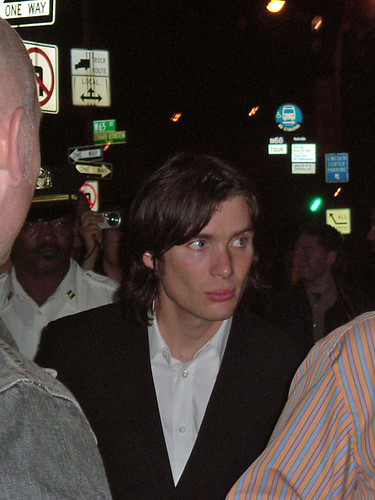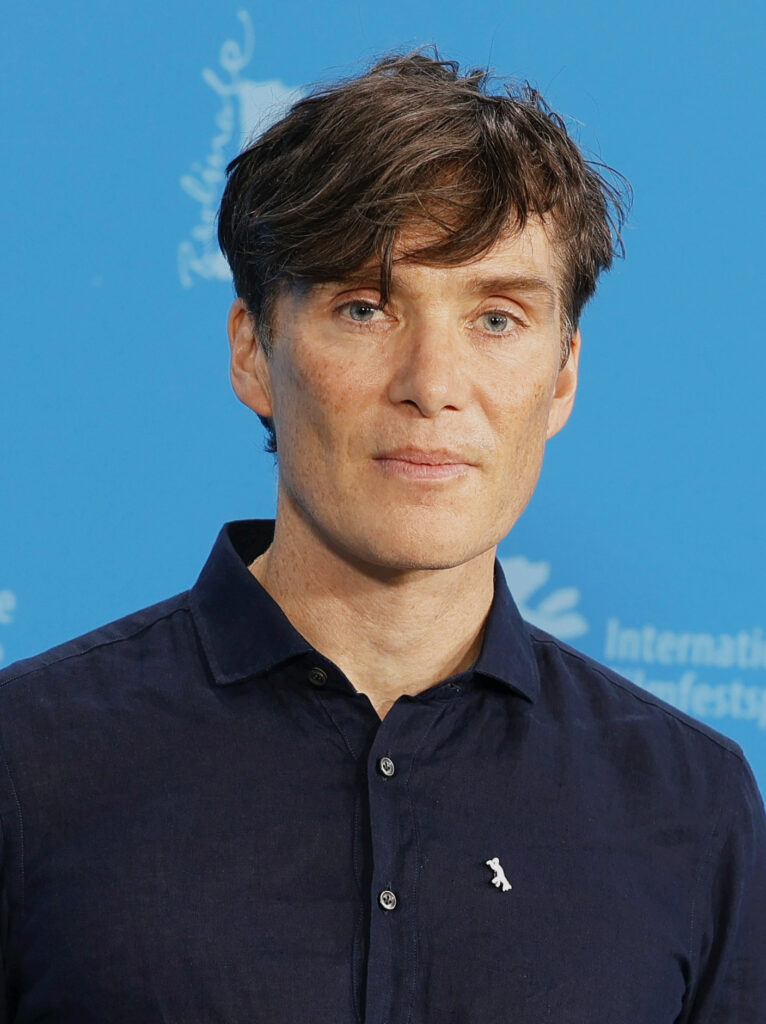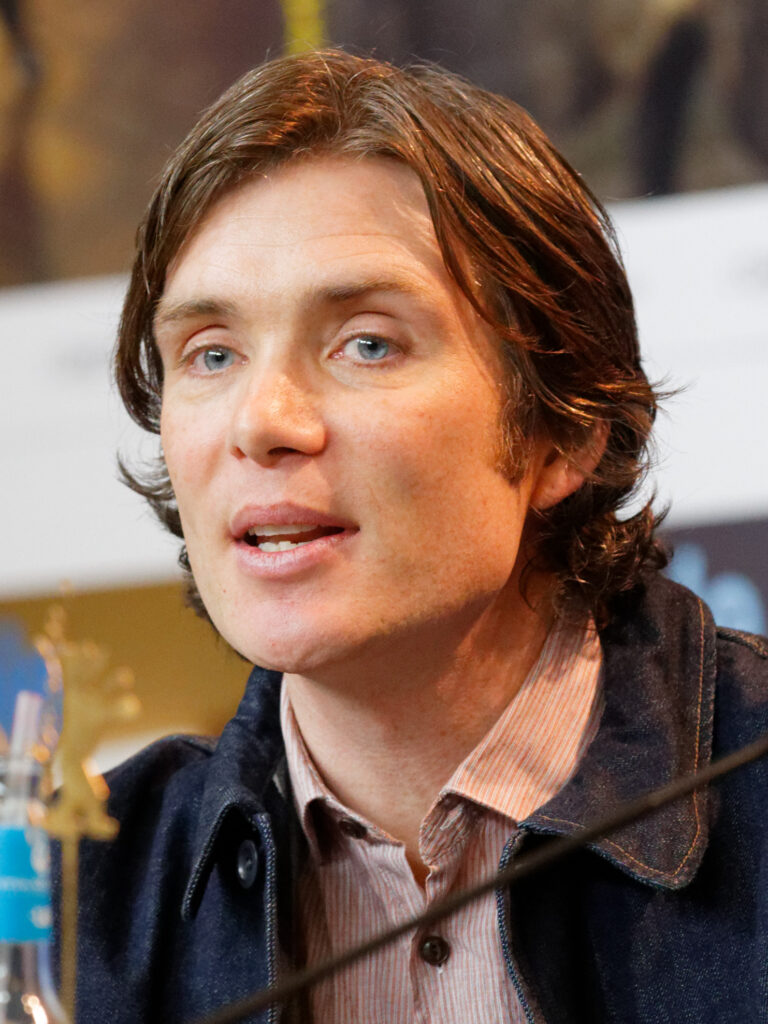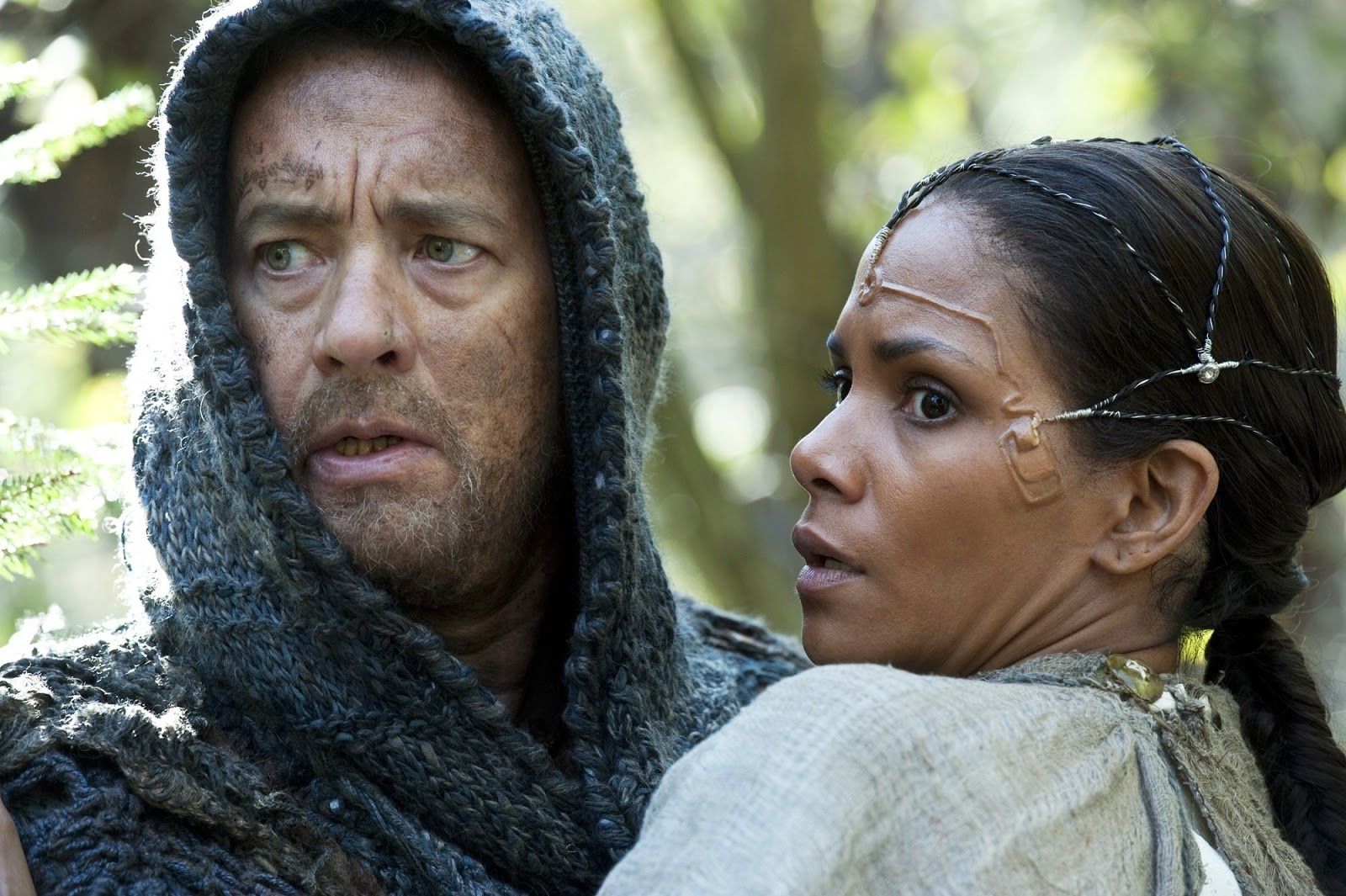
Alright, cut to the chase. Cillian Murphy just bagged an Oscar, right? So what does the dude do next? He pivots straight into a Netflix drama called “Steve.” It’s about as far from a nuclear physicist as you get, but it’s hitting just as hard in the feels. This isn’t your grandma’s cozy Sunday night flick; this is raw, messy, and vital storytelling that’s got the internet buzzing louder than a hornets’ nest poked with a stick.
“Steve” isn’t just another film; it’s a gut punch disguised as social drama, a deep dive into human struggle, set in a place for troubled boys. Murphy, our guy, plays Steve, the head teacher, battling his own demons while trying to keep this chaotic operation afloat. His intensity in “Peaky Blinders” was something, but here he deals with budget cuts, kids throwing furniture, and a documentary crew breathing down his neck. It’s a pressure cooker.
So, buckle up, we’re about to tear into what makes “Steve” such an unmissable, conversation-starting piece of cinema. From Murphy’s killer performance to the heart-wrenching stories of the kids he’s trying to save, we’re breaking down seven crucial elements that kick off this emotional rollercoaster. Get ready to understand why this film is sparking major speculation and why you absolutely need to stream it now.

1. **The Heart of the Storm: Steve’s Role as Headteacher and the Stanton Wood Premise**Imagine a school, right? Not your average, but a “last-chance English reform school for adolescent boys with mental health issues and violent tendencies.” That’s Stanton Wood, the fictional manor at the center of “Steve.” It’s a sanctuary, offering home, education, and a fighting chance. Yet, it’s constantly in “permanent crisis mode,” as one teacher starkly puts it.
This is where Steve, played by Cillian Murphy, steps in. He’s the headteacher, preventing this chaotic operation from becoming a dumpster fire. The staff knows the cost of failure is astronomically high. It’s a venture infused with “intrinsic hopefulness” and overwhelming weight, a duality pulsing through every frame. These aren’t just delinquents; they are boys with “societal and behavioural difficulties” desperately needing guidance.
The school environment itself buzzes with “almost anarchic energy.” Students are “rude, brash, funny, endlessly energetic, confrontational and far smarter than our prejudices might allow,” grappling with “struggling to figure out who they’ll become.” Steve’s day is a relentless barrage of breaking up fights and de-escalating volatility. Outsiders often label Stanton Wood “last chance” or “dumping ground,” highlighting the uphill battle Steve faces, fighting for these boys against a system ready to give up.

2. **Cillian Murphy’s Masterclass: Portraying a Tormented Hero**Let’s be real, Cillian Murphy is on an absolute tear. Fresh off his Oscar, he delivers “one of the year’s standout performances” in “Steve,” playing a “similarly tormented character,” an “addicted headmaster” who’s a “crucible of sorts for his students’ struggles.” You see him, and you know this guy is barely holding it together, running on fumes and sheer willpower.
The film opens with Steve, “fidgety, his eyes glassy,” trying to maintain a calm facade for a documentary crew. It’s a masterclass in subtle acting. When asked to describe himself, his response – “Very, very tired” – perfectly encapsulates the immense burden. This clever beat reveals internal turmoil without a dramatic monologue.
Murphy imbues Steve with an “internal storm of regret and impatience,” conveying a “barely veiled desperation” that chillingly mirrors his students. He’s a “sensitive man with his own issues of guilt, addiction and severe exhaustion.” He self-medicates with pills and wine, a brutal portrayal of a man teetering on the edge. This “riveting” performance, full of “subtlety and grace,” keeps this otherwise “shaky” film grounded, proving Murphy truly is a master of his craft, delivering a “superb performance” that anchors reality.

3. **The Enigmatic Shy: Jay Lycurgo’s Haunting Performance**While Cillian Murphy is “Steve,” the original novel was “Shy.” This shift doesn’t diminish the “wrenching, raw breakability” of Jay Lycurgo’s performance as Shy, who becomes the “functional heart of the film.” Shy is introduced “listening to his Walkman, getting high before class, full of an infectious and joyful spirit – but it can also disappear in an instant.” He’s a bundle of contradictions and raw emotion.
Shy defines himself: “angry and bored,” expanding to “depressed, angry and bored.” This kid carries a massive weight, grappling with “inner fragility with his impulse for self-destruction and violence.” His journey is a crucial emotional anchor, illustrating the devastating impact of abandonment and the desperate need for connection. He “desperately wants to be seen,” even if he doesn’t fully understand it.
The film doesn’t shy from Shy’s demons: a gut-punching scene where his mother disowns him. His pain manifests unpredictably: unafraid to “stand up to a pompous MP,” yet admitting to “stabbing his stepfather,” throwing furniture, and, terrifyingly, “loads up his backpack with rocks and steps into a pond.” Lycurgo’s powerful portrayal prompted Murphy to recall his audition tape “broke everybody’s heart.” The film offers fragile hope: Shy “does not sink to the bottom of the pond,” he “makes it out. He makes it to another day,” leaving an “indelible impression.”

4. **Shola’s Unflappable Presence: Navigating Challenges as a New Teacher**In a school teeming with “anarchic energy” and volatility, Simbi Ajikawo (aka Little Simz) brings a “calming and quiet presence” to Shola. As a newer teacher, her self-description – “Focused. Dedicated. Flexible.” – captures her composed exterior. She radiates control, impressive since she’s “closer in age to the students,” making her potentially vulnerable.
Her calm doesn’t mean an easy ride. Shola deals with “difficulties of her own, including ual harassment from one of the students.” This adds an incredibly difficult layer, forcing her to “navigate how best to do her job while also taking care of herself.” It’s an “almost impossible tightrope walk,” highlighting unseen struggles faced by educators in challenging environments. The film wisely addresses these harsh realities.
Ajikawo herself revealed that playing Shola profoundly changed her perspective, leading her to “humanize teachers a lot more and understand them a lot more.” She recognized their deep care for kids, a task made exponentially harder “with a bunch of teenagers that are figuring themselves out – and then having your own life stuff on the side.” This insight adds tremendous depth to her portrayal, making Shola a symbol of dedicated, yet challenged, professionalism.

5. **The Mid-’90s Backdrop: Cool Britannia’s Cognitive Dissonance**”Steve” is meticulously “set in the mid-’90s,” a choice more than stylistic. “Cool Britannia” was an era of optimism and cultural revival. But for troubled youth and underfunded institutions like Stanton Wood, this “coolness” was a cruel mirage, creating profound “cognitive dissonance” the film expertly explores.
As Max Porter explains, “what did Cool Britannia mean to a bunch of really unhappy kids who’ve made mistakes and been failed repeatedly?” For these boys, “Do they feel they’re in 1996? No, they’re just living their lives.” It’s a stark reminder that while the mainstream painted prosperity, marginalized segments still grappled with deep issues, often exacerbated by cuts to social care services after “18 years of Conservative leadership.”
The setting highlights the disparity between national mood and lived realities. The school itself, “funded by the government and occupying a shambolic privately owned manor,” reflects this precarious balance. It’s a relic, limping along on “bare bones” due to “budget cuts.” This isn’t just nostalgia; it’s a commentary on how societal neglect creates intense struggle. The “ambivalence of both the authorities and the public to human need” is palpable. Sir Hugh Montague Powell, the MP, cares more about his “honorific” than the welfare of the boys or staff. It’s a darkly humorous, yet deeply serious, illustration of the era’s disconnect.

6. **Stanton Wood’s Existential Threat: The Impending Closure**Just when you think Steve and his staff couldn’t handle another crisis, the rug gets pulled. Stanton Wood, the last bastion of hope, is going to shut down. This isn’t distant; it’s a devastating blow delivered during a “pointless meeting.” They are “summarily informed that the Trust is pulling their funding, selling the property and closing the school before the end of the year.” Talk about a gut punch.
This news ignites an “urgency” among the staff, a frantic scramble to “still be of help to all the kids.” But there’s a crushing realization: “there’s no way to fix the problem in the moment.” Any solution “will have to come with time and with better systems than any one person or institution can offer.” It’s a painful acknowledgment of their limitations, made agonizing by their immense personal investment.
The impending closure amplifies stakes for every character. For boys like Shy, disowned by his mother, it means “nowhere to go.” The school, for all its chaos, is their closest thing to a home. “Arguments that the school is saving lives and keeping young men out of prison are illustrated with heartfelt poignancy” as staff grapple with implications, knowing “the boys’ other options are far more grim and punitive.” Steve’s enraged reaction, an “eruption of aggressive volatility,” mirrors the students. The closure underscores the film’s core theme: the fragility of institutions, and the immense personal cost borne by those who dare to care within a failing system.

7. **Steve’s Inner Battle: Addiction, Guilt, and the Burden of Saving Others**While Steve dedicates his life to saving others, his own is slowly unravelling. He’s “grappling with his own struggles – including addiction, guilt, and pain.” This “inner battle” makes his outward efforts to mentor students even more heroic, and tragically, more self-destructive. He’s a man who tries to “suppress it with alcohol and painkillers,” a clear sign of a “helpless helper,” someone “who wants to do good but finds roadblocks to those efforts at every turn.”
Much of his torment stems from “guilt over a car accident he was in that resulted in the death of a child.” This trauma haunts him, manifesting as a self-punishing drive to save others, perhaps as atonement. He pops painkillers, takes “slugs of liquor from a secret stash,” and scrounges “on the floor for a bottle of oxycodone.” It’s an unflinching look at how unresolved pain can lead even the strongest down a dark path, battling demons while outwardly appearing strong.
His deputy, Amanda, sees it all, telling him he needs to accept he’s “not responsible for all the pain in the world.” She delivers a crucial line: “It’s not your fault. Somebody died, and you’re numbing,” she says. “I want you to say it’s not your fault. You’re in agony, you really are, and you can’t stop it, and you can’t numb it.” This dialogue is the film’s beating heart: “pain can’t be repressed.” It highlights the necessity of confronting trauma head-on. Steve’s struggles parallel his students’. His journey highlights that “vulnerability is the strongest weapon we possess as human beings,” suggesting only by acknowledging wounds can we heal and build trust.
Alright, let’s keep this train rolling! We’ve ripped through the immediate gut-punches of “Steve” – Murphy’s sheer brilliance, Shy’s heartbreaking journey, and the whole damn school teetering on the brink. This flick isn’t just surface-level chaos; it’s got layers, a perfectly constructed onion of human struggle, and we’re peeling back every single one.
This next batch of insights dissects the broader strokes: unsung heroes, camera sharks, and the genius behind the lens. We’ll unpack how Max Porter’s novel got the Hollywood treatment, and what critics actually thought. Grab another cold one, because we’re not done yet.

8. **Amanda and Jenny: The Unsung Heroes of Stanton Wood**You might think Steve shoulders all the weight at Stanton Wood. He kinda does. But he’s not alone in that pressure cooker. Tracey Ullman crushes it as Amanda, deputy head, and Emily Watson as Jenny, the therapist. These women are the backbone, navigating daily insanity with tough love, steely resolve, and unspoken empathy. They’re picking up pieces when the system fails, which is often.
Amanda, she’s a force. Ullman, known for comedy, taps serious dramatic chops. She’s the pragmatist, seeing Steve spiral but understanding his dedication. She knows the score: “Stanton Wood was supposed to be a center for excellence,” she says, but now it’s “down to the bare bones… permanent crisis mode.” That’s blunt honesty you need facing closure.
Then there’s Jenny, the brilliant therapist. She’s the quiet observer, making sense of boys like Shy. She makes herself “still and invisible” during explosive sessions. But she’s not just for the kids; she shows “equal concern for Steve’s strained coping skills.” These two are anchors, proving the fight for these kids isn’t a solo act, but a collective, exhausting, profoundly human effort.

9. **The Documentary Crew: Exploitation or Empathy?**The film drops a documentary crew right into this exploding powder keg. Why? They’re supposed to chronicle life at Stanton Wood, but it feels less like journalism and more like a twisted reality show. They’re asking superficial questions, poking where they shouldn’t, confirming every negative stereotype. It’s like they’re there for the drama, not the truth.
Mielants uses these VHS interludes to shake things up. Every time the crew rushes to catch an “out-of-control behavioral episode,” you feel a cynical vibe. Damon Wise pointed out their report seems to “confirm negative views… rather than offer a corrective.” No kidding. They’re after juicy soundbites, not genuine human need.
Teenagers, seeing the cameras, start “humping the air, pretending to jerk off.” “All for the cameras. It’s performative. It doesn’t mean anything other than to get a response.” This encapsulates the film’s critique of media intrusion, commodifying struggle. Are they helping, or just chasing their next viral clip? It makes you wonder.

10. **Tim Mielants’ Vision: Chaos and Clarity**Director Tim Mielants, who’s crushed it with Cillian Murphy before, brings an unsettling vision to “Steve.” This isn’t polished drama. Mielants opts for “amplified reality,” a “less subtle, more aggressive” style, provoking emotion. Often, it works, drawing you into raw, nerve-jangling chaos.
His camera work is a character. DP Robert Heyvaert’s “handheld camera darting about and tempers constantly flaring” throws you into “borderline hysteria.” It’s exhausting by design, mirroring Steve’s frenetic state. Critics noted his “breakneck pace and admirable, but distracting virtuoso flourishes,” and “getting the drones and the oners involved.” It makes the film feel “performatively intense.”
But then, Mielants pulls a fast one. An “impromptu game of muddy soccer in a sudden downpour” “signals a shift in tone.” The camera does a “180-degree rotation” and adopts a “calmer visual style,” shifting focus to the teachers’ internal lives. This isn’t just stylistic; it’s narrative, moving beyond external eruptions to internal struggles. It’s a bold, brilliant, unique directorial voice.

11. **From Page to Screen: Adapting Max Porter’s “Shy”**”Steve” is based on Max Porter’s 2023 novella, “Shy.” Kicker: the film pivots the narrative center. The novel told the story from Shy’s perspective, a “young person of color trying to calm his mind.” The movie, however, “reorients the drama as the White middle-class headmaster’s struggle.” Not just a title change; a fundamental shift.
Max Porter himself adapted his novel, an interesting move. Cillian Murphy, who collaborated with Porter before, was given a proof of “Shy” and said, “it just broke my heart.” His involvement, and Big Things Films, shaped the adaptation. Murphy clearly connected deeply with the material, especially Steve’s character.
While Murphy “shines,” and Lycurgo does “good work,” critics felt this pivot meant “we lose so much… about Shy. He becomes a cipher.” It’s a “curious” choice, creating an “uncertainty” that keeps viewers “hyper-alert.” Still, core ideas about “tough love, rehabilitation and general kindness” “shine through the melee,” proving Porter’s story remains impactful.

12. **The Critical Verdict: “Superb Performance,” “Sobering Drama”**How did “Steve” land with critics? Mixed but generally favorable. Rotten Tomatoes clocked 77% positive: “A sobering drama… Cillian Murphy’s superb performance keeps it grounded in reality.” Sounds right – Murphy often glues ambitious projects.
Metacritic, the other big aggregator, gave it 65/100 (“generally favorable” reviews). Damon Wise for Deadline noted the film “breezes by at a surprisingly brisk pace” and “packs a lot of deep thought.” High praise for an emotionally dense film.
It wasn’t a clean sweep. Some critics called it “flawed but passionate,” a “frustrating near-miss.” “Pile-it-on contrivances” and “performatively intense” filmmaking tested “suspension of disbelief.” One review even suggested “with a lesser actor… this movie would be a disaster.”
But with Cillian Murphy, you get a “superb performance” that “adds subtlety and grace,” even when the script or direction stumbles. His talent elevates an “otherwise shaky film,” ensuring it “keeps it grounded in reality.”

13. **The Soundtrack of Struggle: Music as a Narrative Force**Can’t talk “Steve” without its soundscape. It’s not just background; it’s a living, breathing narrative part. Ben Salisbury and Geoff Barrow’s score is crucial, “deftly navigat[ing] the film’s many changeable moods.” It contributes to tension and rare moments of contemplation.
Then there’s Shy. Never without his headphones, a “Walkman” pumping “drum and bass.” That music isn’t just stylistic; it’s his shield, his coping mechanism, the “soundtrack to his life.” It’s a powerful metaphor for his inner world, a constant rhythm against chaos, finding control.
Adding brilliance, Simbi Ajikawo (Little Simz) wrote “Don’t Leave Too Soon” for the film. She was “blown away by Jay’s performance” and “wanted to write a song for Shy, just because I feel like he just desperately wants to be seen.” This track, born from empathy, becomes profound emotional resonance. Music in “Steve” isn’t just entertainment; it’s essential for understanding and connection.
Read more about: The King’s Fading Echo: An In-Depth Look at Elvis Presley’s Tumultuous Final Year Before His Untimely Death

14. **The Enduring Message: Vulnerability, Hope, and Human Connection**What’s the big takeaway from “Steve”? Beyond the grit and Murphy’s performance, this film pounds home: vulnerability is not weakness, it’s “the strongest weapon we possess.” Steve, the “helpless helper,” battling his demons, emphasizes “pain can’t be repressed.” It’s about confronting trauma head-on.
The film, despite bleakness, offers “fragile hope.” Shy, after his pond ordeal, “makes it out. He makes it to another day.” Not a Hollywood ending, but a raw acknowledgment that “the disaster changes shape and it becomes tomorrow’s joy, or whatever.” It’s finding strength in resilience, even when every day is a battle.
At its core, “Steve” champions human connection. The staff, despite struggles, are “determined to help each other.” Steve’s poignant observation: “there’s infinite things… The hurt and trauma might not disappear entirely, but it can be outweighed by everything else — by music, by love, by life — as long as we pay attention to each other” is the film’s beating heart. Seeing and being present for one another is, “enough, isn’t it?”
***
Read more about: From Subtle Shade to Royal Stages: What Celebs Are Really Saying About Adam Lambert (And What He’s Saying Back!)
And there you have it, folks. “Steve” isn’t just another Netflix drop; it’s a cinematic gut-punch that sticks with you, a raw, unflinching look at the fight for forgotten kids and the heroes who burn themselves out trying to save them. Cillian Murphy and the entire cast deliver performances that will leave you absolutely floored, and Mielants’ direction ensures you feel every single moment. It’s messy, intense, and damn important. So, seriously, what are you waiting for? Fire up Netflix and immerse yourself in the world of Stanton Wood. You might just find yourself thinking about it long after the credits roll.



